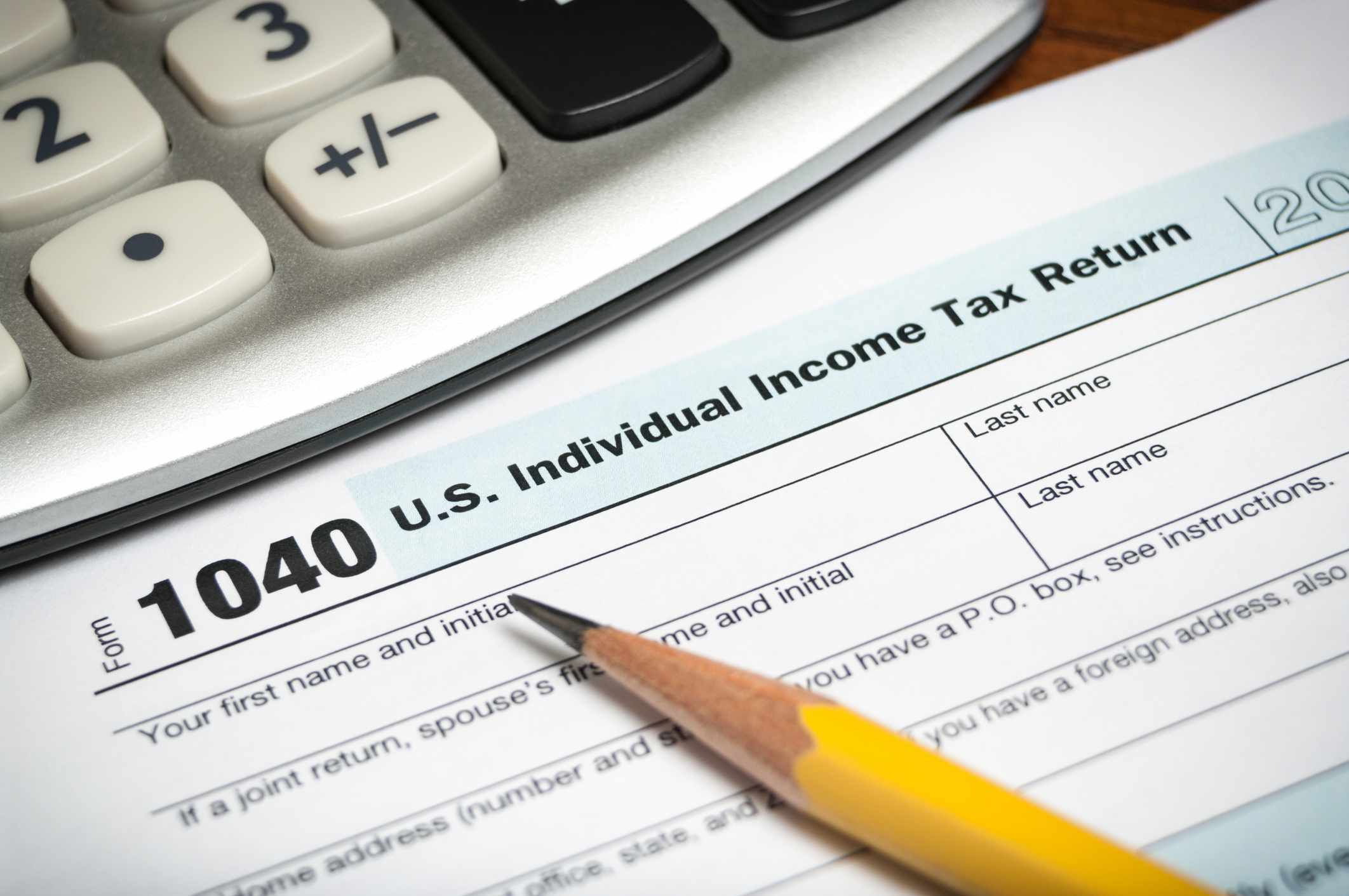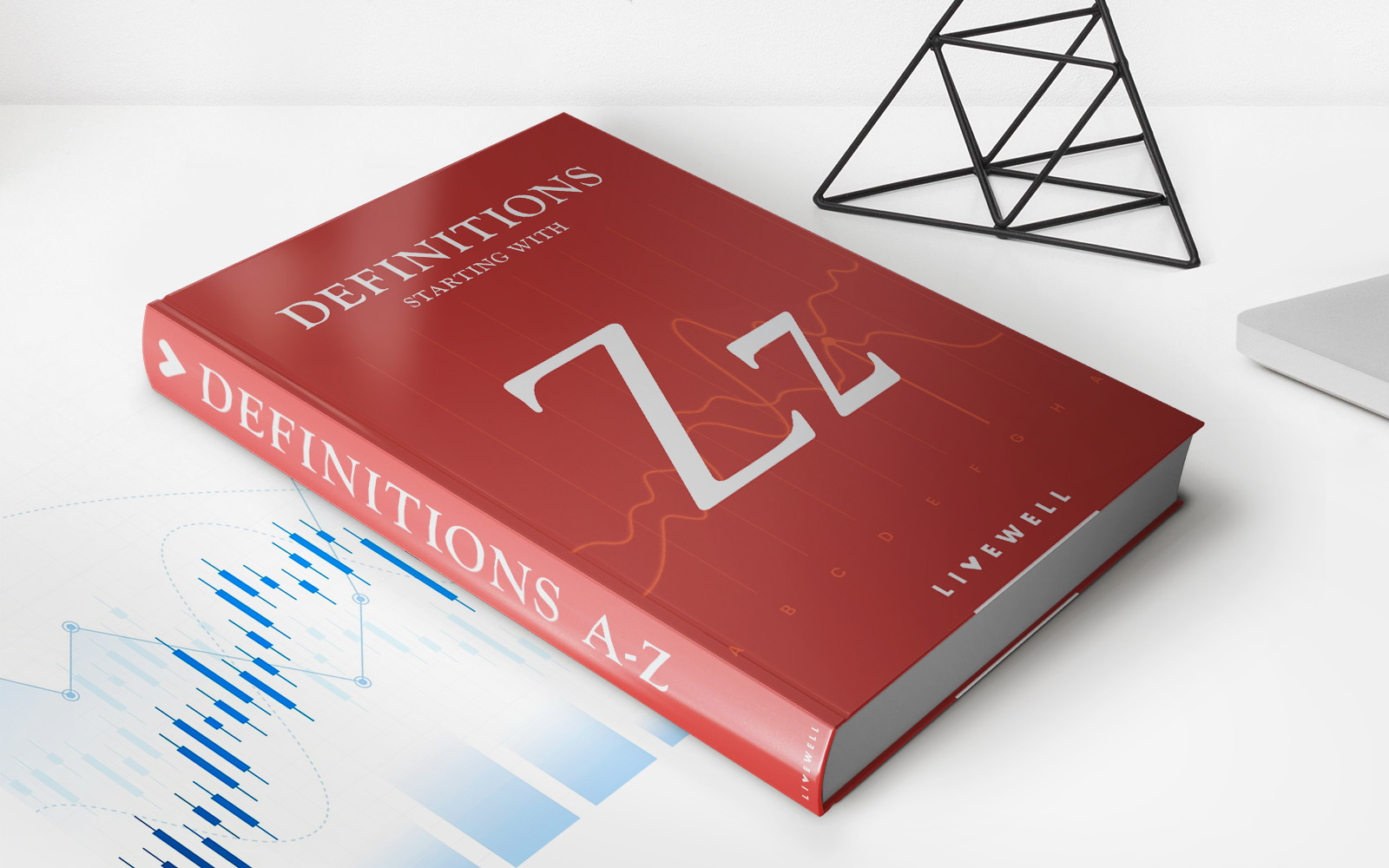Home>Finance>What Type Of Life Insurance Incorporates Flexible Premiums?


Finance
What Type Of Life Insurance Incorporates Flexible Premiums?
Modified: February 21, 2024
Looking for a flexible premium life insurance option? Discover the finance-focused life insurance plans that offer customizable premium options to fit your needs.
(Many of the links in this article redirect to a specific reviewed product. Your purchase of these products through affiliate links helps to generate commission for LiveWell, at no extra cost. Learn more)
Table of Contents
- Introduction
- Definition of Flexible Premiums
- Benefits of Flexible Premiums in Life Insurance
- Types of Life Insurance with Flexible Premiums
- Whole Life Insurance with Flexible Premiums
- Universal Life Insurance with Flexible Premiums
- Variable Life Insurance with Flexible Premiums
- Combination of Life Insurance and Investments with Flexible Premiums
- Factors to Consider When Choosing a Life Insurance Policy with Flexible Premiums
- Conclusion
Introduction
Life insurance is a critical component of personal financial planning, providing financial protection for loved ones in the event of the policyholder’s death. While traditional life insurance policies require fixed premium payments, there is another option: life insurance policies that incorporate flexible premiums.
Flexible premium life insurance policies allow policyholders to adjust their premium payments based on their financial circumstances. This means that policyholders have the flexibility to increase or decrease their premiums over time, depending on their ability to pay. This added flexibility can be incredibly beneficial, as it allows policyholders to adapt their coverage to their changing financial situation without the need to purchase a new policy.
In this article, we will dive deeper into the concept of flexible premiums in life insurance. We will explore the benefits of flexible premium policies and discuss the different types of life insurance that offer this feature. Additionally, we will examine the factors you should consider when choosing a life insurance policy with flexible premiums.
If you are looking for a life insurance policy that can adapt to your financial needs, keep reading to learn more about the types of life insurance that incorporate flexible premiums. By understanding these options, you can make an informed decision that provides both comprehensive coverage and financial flexibility.
Definition of Flexible Premiums
Flexible premiums in life insurance refer to the option for policyholders to adjust their premium payments based on their financial capabilities. Unlike traditional life insurance policies with fixed premium amounts, flexible premium policies allow policyholders to increase or decrease their premium payments within certain limits.
The flexibility in premium payments is particularly advantageous for individuals whose financial circumstances may change over time. For example, if a policyholder experiences a decrease in income or faces unexpected expenses, they can reduce their premium payments to align with their current financial situation. Conversely, if their financial situation improves, they can increase their premium payments to maintain or enhance their coverage.
It is important to note that the flexibility in premium payments is subject to certain rules and restrictions. Insurance companies set minimum and maximum premium amounts, and policyholders must adhere to these limits when adjusting their payments. Additionally, changes to premium amounts may impact the policy’s cash value and death benefit, so policyholders should consult with their insurance provider or financial advisor before making any adjustments.
Flexible premium policies are designed to provide policyholders with greater control and adaptability when it comes to their life insurance coverage. By offering the option to adjust premiums, these policies can align with fluctuating financial circumstances, ensuring that policyholders can maintain their coverage without straining their finances.
It is important to understand that flexible premium policies may have higher costs compared to traditional life insurance policies with fixed premiums. This is because the insurance company must factor in the additional administrative costs associated with managing flexible premium payments. However, the benefits of having the flexibility to adapt premium payments to one’s financial situation often outweigh the slightly higher costs.
Benefits of Flexible Premiums in Life Insurance
Flexible premium life insurance policies offer several benefits that can make them a favorable choice for individuals seeking adaptable coverage. Here are some key advantages of incorporating flexible premiums into a life insurance policy:
- Financial Flexibility: One of the significant benefits of flexible premiums is the ability to adjust premium payments to align with your financial circumstances. This flexibility allows you to increase or decrease your premium amounts based on changes in income, expenses, or other financial obligations. This ensures that your life insurance coverage remains affordable and sustainable over time.
- Ability to Maintain Coverage: Life insurance is most valuable when it can provide financial protection to your loved ones. By offering flexible premiums, these policies allow you to continue your coverage even during periods of financial instability. You can lower your premium payments temporarily without having to sacrifice your life insurance protection.
- Opportunity to Increase Coverage: With flexible premium policies, policyholders also have the opportunity to increase their coverage when their financial situation improves. If you experience a salary raise, receive an inheritance, or pay off debts, you can choose to pay higher premiums to enhance your death benefit or accumulate additional cash value.
- Adjustments as Per Life Milestones: Life is dynamic, and our financial needs change as we reach different milestones. Flexible premium policies allow you to adapt your coverage as necessary. Whether you get married, have children, buy a house, or retire, you can modify your premium payments to ensure your life insurance matches your current life stage.
- Potential for Cash Value Accumulation: Some life insurance policies with flexible premiums may include a cash value component. As you continue to make premium payments, a portion of those payments goes towards building cash value over time. This cash value can serve as a source of additional funds that you can borrow against or withdraw when needed.
By incorporating flexible premiums into your life insurance policy, you can enjoy the advantages of financial flexibility, the opportunity to maintain coverage during challenging times, the ability to increase coverage when circumstances improve, adjustments as per life milestones, and the potential for cash value accumulation. These benefits ensure that your life insurance policy remains adaptable and supportive of your evolving financial needs.
Types of Life Insurance with Flexible Premiums
There are several types of life insurance policies available that offer flexible premium options. Each type has its own features and benefits, making it important to understand your options before choosing the best fit for your needs. Here are the main types of life insurance policies with flexible premiums:
- Whole Life Insurance: Whole life insurance is a type of permanent life insurance that offers lifelong coverage and a cash value component. With whole life insurance, policyholders can have the flexibility to adjust their premium payments. However, it’s important to note that these adjustments may affect the cash value growth and death benefit.
- Universal Life Insurance: Universal life insurance is another form of permanent life insurance that provides both death benefit protection and a cash value account. These policies typically allow policyholders to adjust their premium payments within certain limits. The cash value growth is dependent on the premium paid and the interest credited. However, lowering premium payments for an extended period can result in the policy expiring prematurely.
- Variable Life Insurance: Variable life insurance allows policyholders to have control over their premium payments while also providing the opportunity for investment growth. Policyholders can allocate their premium payments towards different investment options offered within the policy. The cash value and death benefit can fluctuate depending on the performance of the chosen investments.
- Combination of Life Insurance and Investments: Some insurance companies offer policies that combine life insurance coverage with investment options. These policies provide the flexibility to adjust premium payments and allocate funds towards investments such as mutual funds or indexed funds. The cash value and death benefit are tied to the performance of the investments chosen.
Each type of life insurance policy with flexible premiums has its own unique features and considerations. It’s crucial to evaluate your financial goals, risk tolerance, and timeline to determine which type of policy aligns best with your needs and preferences. Consulting with a financial advisor or insurance professional can help you navigate the options and make an informed decision.
Whole Life Insurance with Flexible Premiums
Whole life insurance is a type of permanent life insurance that provides coverage for a policyholder’s entire lifetime. Unlike term life insurance, which covers a specific period, whole life insurance offers lifelong protection, as long as the premiums are paid. One of the advantages of whole life insurance is that it can incorporate flexible premium options, allowing policyholders to adjust their premium payments based on their financial circumstances.
With whole life insurance, policyholders have the flexibility to increase or decrease their premium payments within certain limits. This means that if a policyholder’s financial situation becomes strained, they can lower their premium payments temporarily. On the other hand, if their financial capability improves, they can choose to increase their premium payments to accumulate more cash value or enhance the death benefit.
It’s important to note that adjusting premium payments in whole life insurance may have consequences on the policy’s cash value growth and death benefit. When premium payments are lowered, the cash value growth may slow down, and the death benefit may not increase as rapidly. Increasing premium payments, on the other hand, can result in accelerated cash value accumulation and a higher death benefit.
The cash value component of whole life insurance is another feature that policyholders can take advantage of. The cash value grows over time as a portion of the premium payments is allocated towards it. This accumulated cash value can be accessed through policy loans or withdrawals, providing a source of funds for emergencies or other financial needs.
In addition to the flexibility in premium payments and the potential for cash value accumulation, whole life insurance offers other benefits as well. These include a guaranteed death benefit, potential dividends (depending on the policy), and tax advantages. The death benefit provides financial protection to the policyholder’s beneficiaries upon their passing, and the potential dividends can increase the policy’s cash value.
When considering whole life insurance with flexible premiums, it is essential to carefully review the policy details, including any limitations or restrictions on premium adjustments. Consulting with a financial advisor or insurance professional can help ensure that you fully understand the terms and benefits of the policy and make the best decision for your financial goals and needs.
Universal Life Insurance with Flexible Premiums
Universal life insurance is a type of permanent life insurance that offers policyholders flexibility in premium payments and death benefit amounts. This type of insurance combines a death benefit with a cash value component, allowing policyholders to adjust their premium payments within certain limits.
The flexibility of premium payments is a key feature of universal life insurance. Policyholders have the freedom to increase or decrease their premium amounts, depending on their financial capabilities and needs. This flexibility allows individuals to adapt their coverage to their changing financial situations, making it an attractive option for those seeking greater control over their life insurance policy.
When adjusting premium payments in universal life insurance, it’s important to be mindful of the impact on the policy’s cash value growth and death benefit. Lowering premium payments for an extended period can result in the policy expiring prematurely if the cash value does not support the ongoing costs of insurance coverage. Conversely, increasing premium payments can lead to faster cash value accumulation and a higher death benefit.
The cash value component of universal life insurance accrues interest based on prevailing market rates or a minimum guaranteed rate set by the insurance company. Policyholders may have the opportunity to allocate their premium payments towards the cash value, allowing it to grow tax-deferred. This accumulated cash value can be accessed through policy loans or withdrawals, providing a source of funds for various purposes.
Another key feature of universal life insurance is the adjustable death benefit. This allows policyholders to increase or decrease the amount of coverage within certain limits. Increasing the death benefit may require additional underwriting or evidence of insurability, while decreasing the death benefit can result in lower premium payments. This flexibility enables policyholders to align their coverage with their changing needs, such as when experiencing major life events or financial milestones.
Universal life insurance with flexible premiums offers a combination of lifelong coverage, cash value accumulation, and adjustable premium and death benefit options. It provides policyholders with the ability to adapt their coverage to their evolving financial circumstances and goals. However, it is important to review the policy’s terms and conditions, including any restrictions or fees associated with premium adjustments, to ensure a clear understanding of how the policy works.
To determine if universal life insurance with flexible premiums is the right choice for you, consider consulting with a financial advisor or insurance professional. They can assess your financial situation, goals, and risk tolerance to help guide you in making an informed decision that aligns with your needs and objectives.
Variable Life Insurance with Flexible Premiums
Variable life insurance is a type of permanent life insurance that provides policyholders with investment options alongside their life insurance coverage. This type of policy allows individuals to allocate their premium payments towards different investment options, such as mutual funds or indexed funds, while also offering flexibility in premium payments.
The flexible premium feature of variable life insurance allows policyholders to adjust their premium payments within certain limits. This gives individuals the ability to increase or decrease their premium amounts based on their financial capability and investment objectives. As financial circumstances change, policyholders can adapt their premium payments to align with their current situation.
One of the key advantages of variable life insurance with flexible premiums is the potential for investment growth. Policyholders can choose investment options based on their risk tolerance and investment goals. The cash value of the policy is tied to the performance of these investments, offering the possibility of higher returns compared to traditional life insurance policies.
However, it’s important to note that with the potential for higher returns, there is also increased risk. The cash value and death benefit of the policy can fluctuate based on the performance of the chosen investments. Policyholders must carefully monitor and manage their investments to ensure they are on track to meet their financial goals.
The cash value component of variable life insurance can provide flexibility and potential benefits. Policyholders may have the option to access the cash value through policy loans or withdrawals, providing them with a source of funds for emergencies or other financial needs. It’s important to understand that accessing the cash value may reduce the death benefit and could have tax implications.
When considering variable life insurance with flexible premiums, it is crucial to be aware of the associated fees and expenses. These policies typically have higher costs compared to other types of life insurance due to the investment component and additional administrative expenses. It’s essential to evaluate your investment goals, risk tolerance, and financial situation to determine if the potential benefits outweigh the costs.
Working with a financial advisor or insurance professional can be beneficial when exploring variable life insurance options. They can help analyze your investment objectives and guide you through the process of selecting suitable investment options within the policy. Additionally, they can assist in understanding the risks and rewards associated with variable life insurance with flexible premiums.
Combination of Life Insurance and Investments with Flexible Premiums
Combination life insurance and investment policies offer a unique approach that combines the benefits of life insurance protection with the potential growth of investments. These policies, often referred to as “unit-linked” or “investment-linked” life insurance, allow policyholders to allocate their premium payments towards both life insurance coverage and investment options, providing flexibility in premium payments.
With a combination policy, policyholders have the freedom to adjust their premium payments within certain limits. This flexibility allows individuals to increase or decrease their premium amounts based on their financial circumstances and investment goals. By having control over premium payments, policyholders can adapt their coverage and investment strategies over time to suit their changing needs.
The investment component of these policies offers the potential for growth based on the performance of the chosen investment options. Policyholders can select from a range of investment options such as mutual funds, indexed funds, or other investment vehicles offered within the policy. The cash value of the policy is directly linked to the performance of these investments, providing the opportunity for potential returns.
It’s important to note that with investment-linked life insurance, the policy’s cash value and death benefit can fluctuate based on the performance of the underlying investments. This means that the financial outcome of the policy is influenced by investment market conditions. Policyholders must carefully monitor their investments and adjust their asset allocation according to their risk tolerance and investment objectives.
Another advantage of combination policies is the ability to access the accumulated cash value for various financial needs. Policyholders may have the option to borrow against the cash value or make withdrawals. However, it’s crucial to understand that accessing the cash value may reduce the death benefit and could have tax implications, so careful consideration is necessary before using this feature.
When considering a combination of life insurance and investments with flexible premiums, it’s important to review and understand the policy’s terms and conditions. Pay attention to factors such as charges, fees, and any limitations or restrictions on premium adjustments and investment options. Consulting with a financial advisor or insurance professional is highly recommended to determine if this type of policy aligns with your financial goals and risk appetite.
Combination life insurance and investment policies with flexible premiums offer a unique opportunity to integrate protection and potential growth. By providing the flexibility to adjust premium payments and allocate them towards investments, these policies allow individuals to tailor their coverage and investment strategies to their changing financial circumstances and goals.
Factors to Consider When Choosing a Life Insurance Policy with Flexible Premiums
When selecting a life insurance policy with flexible premiums, there are several important factors to consider to ensure that the chosen policy aligns with your financial goals and needs. Here are key factors to keep in mind:
- Financial Situation: Assess your current financial situation, including income, expenses, and any outstanding debts. Determine how much you can comfortably allocate towards life insurance premiums while still meeting your other financial obligations.
- Flexibility Limits: Understand the limitations and restrictions on premium adjustments within the policy. Ensure that the flexibility provided meets your expectations and allows you to make necessary changes as your financial circumstances change.
- Investment Options: If considering a policy with an investment component, evaluate the available investment options. Consider your risk tolerance, investment objectives, and the performance history of the investment choices. Ensure that the investment options align with your financial goals.
- Cash Value Accumulation: If the policy includes a cash value component, review how the cash value accumulates over time and the options for accessing it. Understand the impact of borrowing against the cash value or making withdrawals on the death benefit and any potential tax implications.
- Death Benefit: Evaluate the death benefit provided by the policy and how it can be adjusted. Consider your beneficiaries’ financial needs and your long-term planning goals. Assess the flexibility to increase or decrease the death benefit as your circumstances change.
- Costs and Fees: Understand the costs associated with the policy, including administrative fees, mortality charges, and any investment-related costs. Compare the costs of different policies to ensure that they fit within your budget and provide value for the benefits offered.
- Company Stability: Research the financial stability and reputation of the insurance company offering the policy. Look for a company with a strong track record, excellent customer service, and reliable payment of claims.
- Professional Advice: Seek guidance from a financial advisor or insurance professional with expertise in life insurance. They can help assess your needs, explain policy details, and provide recommendations based on your unique circumstances.
Taking these factors into account will help you make an informed decision when selecting a life insurance policy with flexible premiums. Careful consideration of your financial situation, the policy’s features, and the associated costs will ensure that you choose a policy that provides the long-term protection and flexibility you desire.
Conclusion
Life insurance policies with flexible premiums offer policyholders the opportunity to adapt their coverage to their changing financial situations. The ability to adjust premium payments provides financial flexibility, allowing individuals to increase or decrease their premiums as needed. This flexibility can help policyholders maintain their coverage during challenging times or increase their coverage when their financial situation improves.
There are various types of life insurance policies that incorporate flexible premiums. Whole life insurance offers lifelong coverage and the potential for cash value accumulation. Universal life insurance provides policyholders with the ability to adjust premium payments within certain limits and offers a cash value component. Variable life insurance combines life insurance protection with investment opportunities, allowing policyholders to allocate their premiums towards different investment options.
Combination life insurance and investment policies provide an innovative approach that integrates life insurance protection with potential investment growth. These policies allow individuals to allocate their premium payments towards both life insurance coverage and investments, offering flexibility in premium payments.
When choosing a life insurance policy with flexible premiums, several factors should be considered. These include your financial situation, the flexibility limits of the policy, available investment options, cash value accumulation, death benefit flexibility, costs and fees, and the reputation of the insurance company. Seeking guidance from a financial advisor or insurance professional can provide valuable insights and help you make an informed decision.
In conclusion, life insurance policies with flexible premiums provide the flexibility to adapt coverage to changing financial circumstances. By selecting the right policy and making appropriate adjustments, individuals can ensure that their life insurance remains affordable and in line with their current needs. The ability to modify premium payments provides peace of mind, knowing that the policy can be adjusted as financial situations evolve. By understanding the options available and considering key factors, individuals can choose a life insurance policy with flexible premiums that suits their financial goals and offers the necessary protection for themselves and their loved ones.














